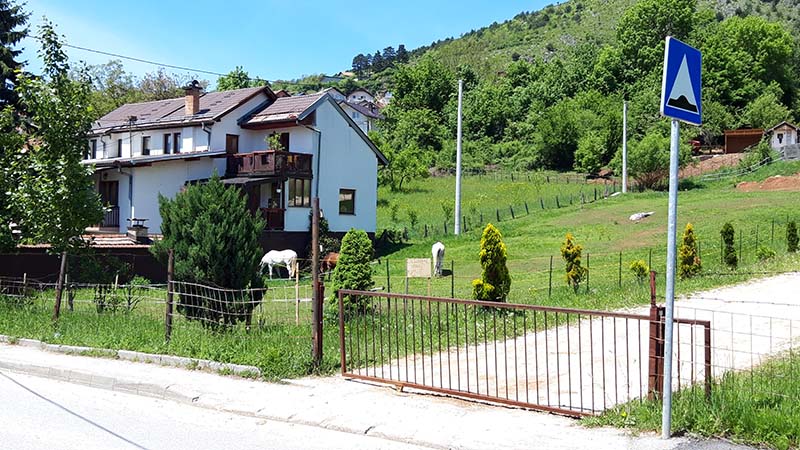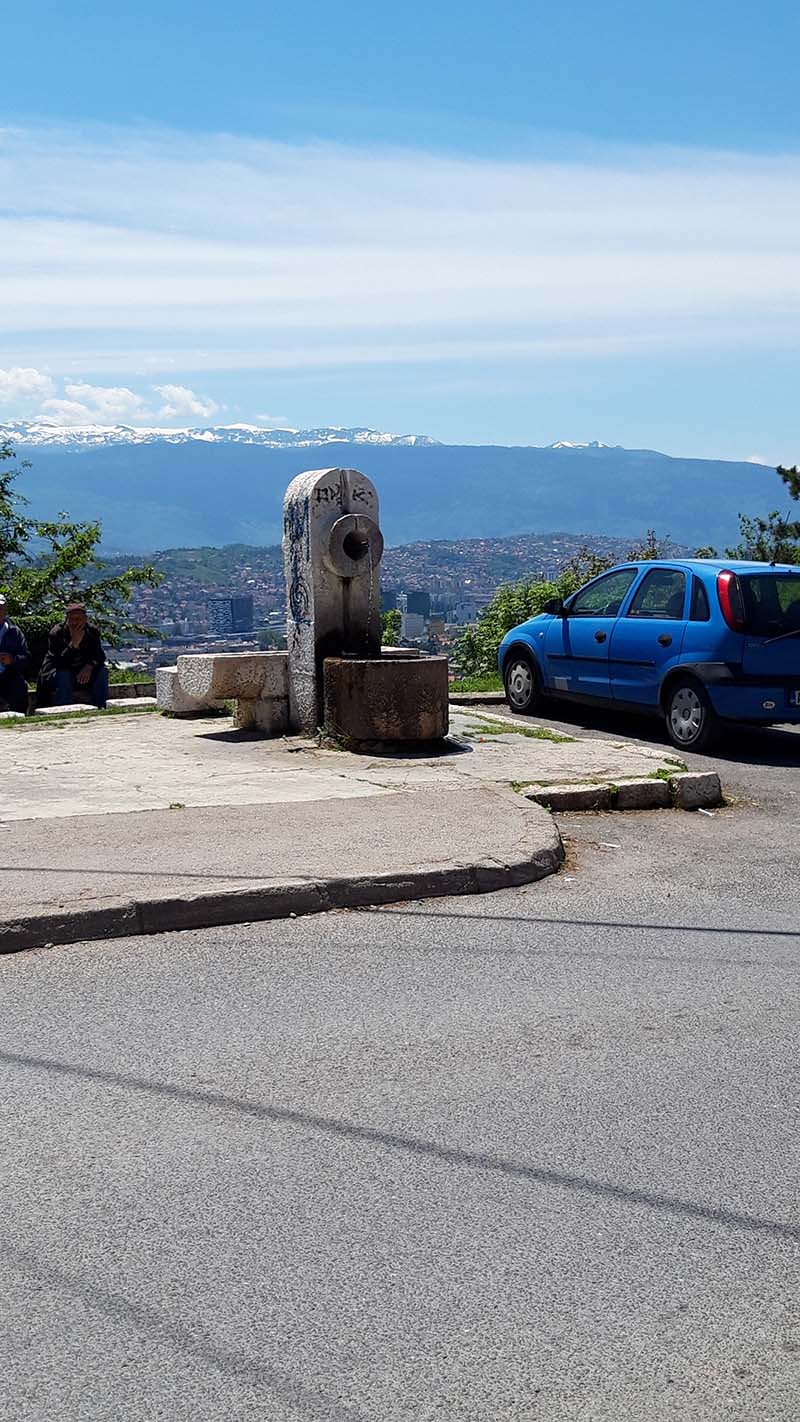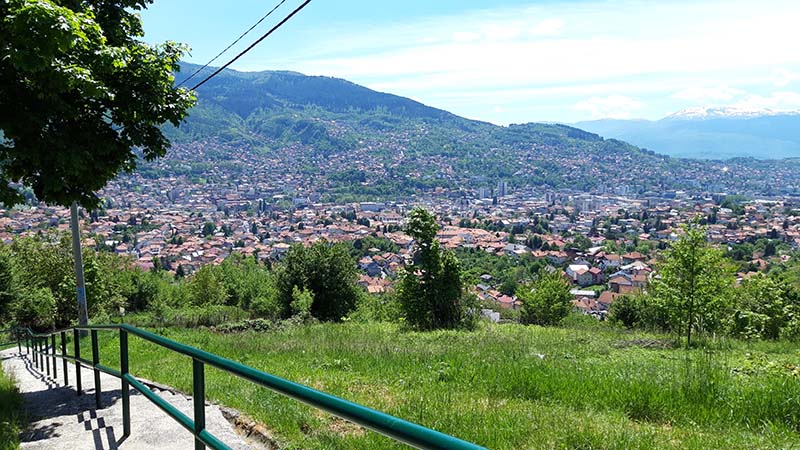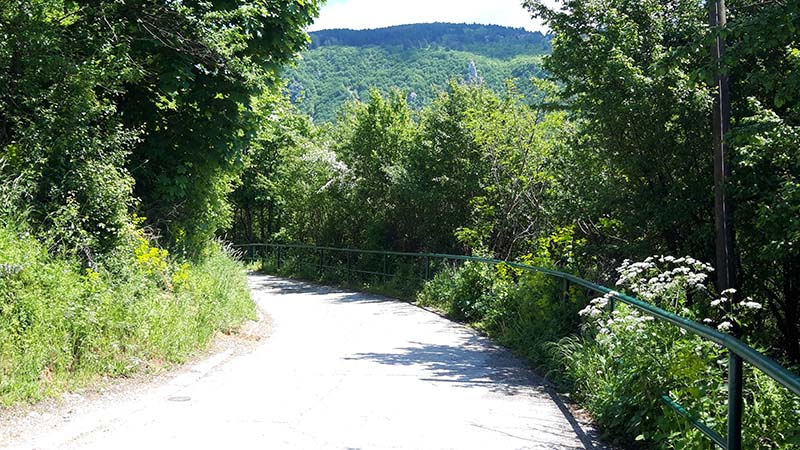This has been a long winter. For man and nature. Here in Sarajevo the continuous snowing and the pandemic left the city in a hibernating state.
That is why, with the advent of spring, the first glimpse at a blue sky is encouraging enough to take a walk. The mountains surrounding Sarajevo shed their brownish rags and changed into a shiny verdant garment. From Vratnik, the neighbourhood where I live, set on a hill, they seem so close. They surround the city under a cobalt sky and echo Courbet’s “Beauty provided by nature is superior to all artists’ compositions” 1.
I decided to take a walk to the upper part of the neighbourhood to reach a range of trees I see from my house. They form a crown on top of the hillside my neighbourhood leans against, and seem to trace a road on the hilltop. At my arrival, locals indicated me a few close places they like to go to find themselves in “nature”: “Up there, it is great for making a picnic, you have only the nature”. Čavljak, is one of them for example. When the weather was more clement, I did a small itinerary for the walk, meddling with the different appealing places that were appearing over the map. Then on a sunny day, I went for the walk with my itinerary and curiosity as guides.
My neighbourhood, Vratnik, is one of the oldest in town. It was developed under Ottoman rule in the 16th century. Vratnik was included in the walled perimeter of the city that was constructed after a raid of the Habsburg Prince Eugene of Savoy in 1697, that left most of the city burnt down. Starting in 1729, under Ottoman rule, Sarajevo constructed fortifications to protect the city. They comprised around 300 meters of walls and 4 towers and included existing bastions like the Bjeli Tabija (white bastion) built around the 15th century. The White Bastion is a major lookout in Vratnik and the site of cannonball during the Ramdan fasting period, indicating the time for iftar.
Some fragments of the fortification gates remain: the Širokac, and Ploča gates on the lower part of the neighbourhood; the Višegrad gate on the upper part. The Višegrad gate and the fort are reminiscence from an old trade route: the imperial route that linked Sarajevo to Istanbul via Višegrad.
After greeting Suleiman (“Sule” to all the inhabitants of the neighbourhood) the stallholder of fruits and vegetables in front of my house, I crossed the neighbourhood’s mejdan, or central plaza. It is just a wide broadening of the main street, around which are grouped; the fire station, a supermarket, the Vratnik Klub U.G. Penzionera, a newspaper stand, a bakery, a pastry shop and café, and different grocery shops. There is also a modest shrine, at the end of the mejdan, where the sidewalk widens under tall trees, between a hairdresser and an abandoned café. A big rectangular opening, with a steel grid, frames the inside, allowing you to peek at a perfectly rectangular and peaceful space.
I took a small pedestrian street to have a different crossing of the mejdan than my usual one, and came by the Porčina Džamija. Mosques define many of the streets in Sarajevo. You will localize it from a distance because of the minaret, but in the vicinity you will walk the length of a perimeter wall, pierced by small windows at eye level and protected by a wire mesh that allows you a glimpse to the inside. Usually a green haven, with some tombstones scattered among the grass.
1. Keeping an eye open, Essays on art, Julian Barnes, 2015, p.66
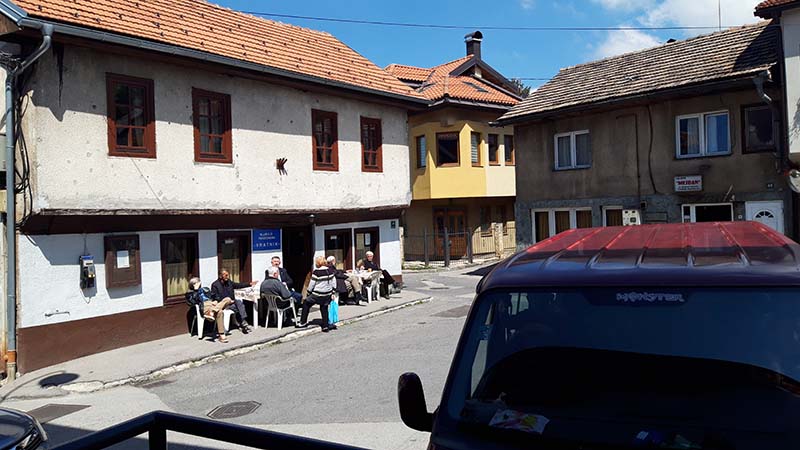

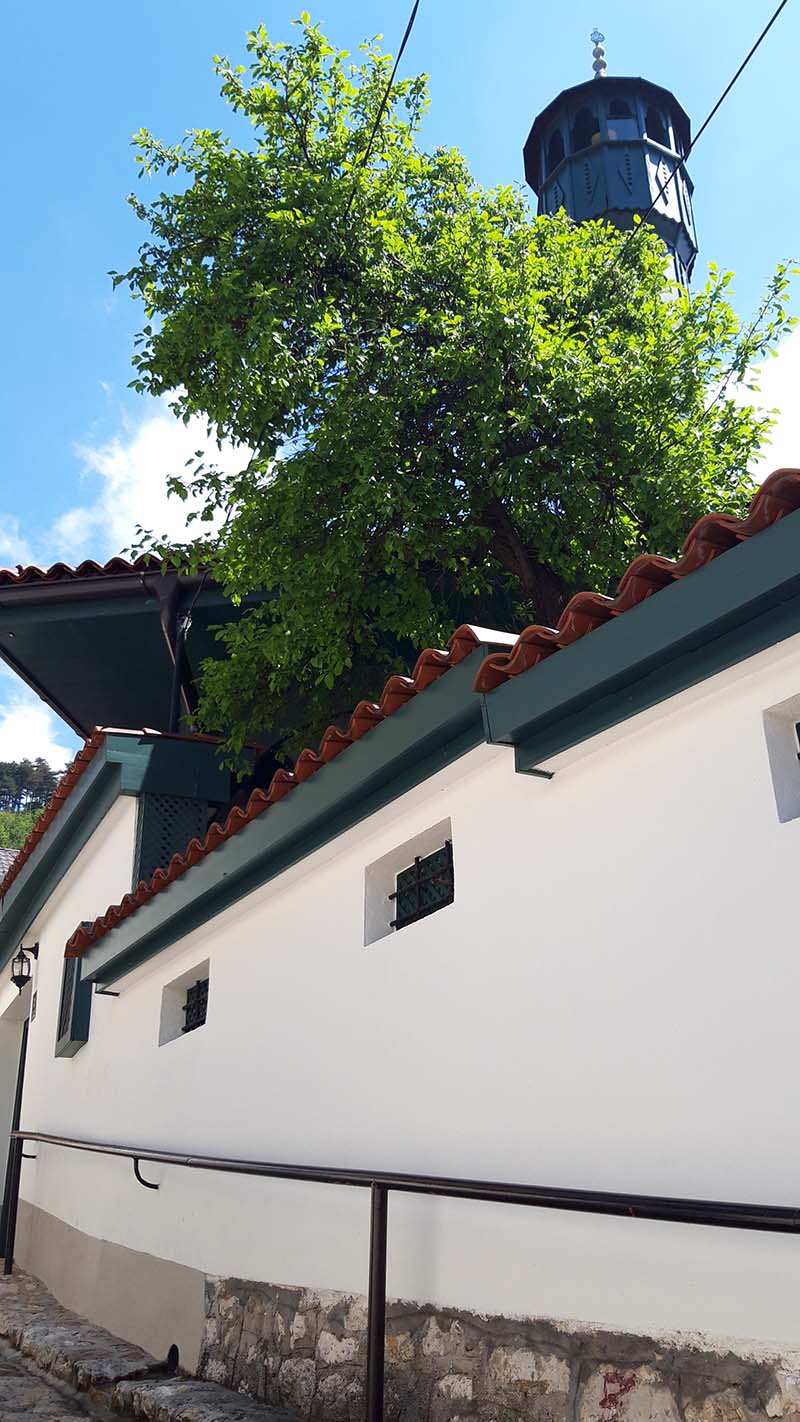


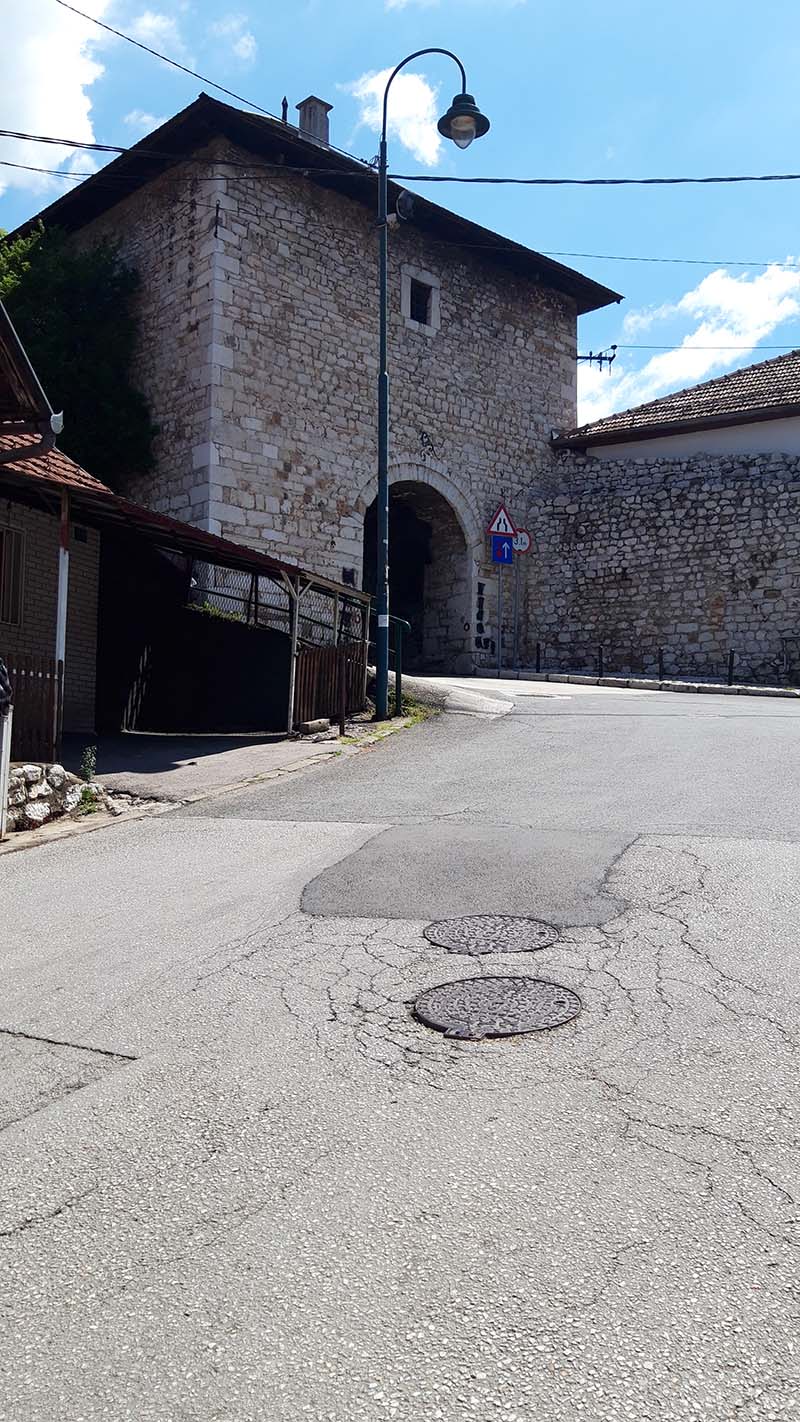
After this small deviation along Porčina pedestrian alley, I landed again on Carina street, just in front of the school Hamdija Kreševljaković. First, the “Primary School of the people VII”, built in 1937, then in 1959, it was renamed after a WWII hero Džavid (Hamza) Haverić (1920-1941); a shoemaker from Vratnik forming part of the resistance group during the war, arrested and sentenced to death. In 1992, the school finally adopted its actual name after a prominent Bosnian historiographer, Hamdija Kreševljaković, also born in Vratnik. The school building occupies a long stretch of the Carina street up, adding some welcomed shade to the walk. Once I reached Višegrad gate at the end of the street, instead of taking Ćebedžije donje street, marked on my map, I decided to go for Ćebedžije gornje. I was drawn to this narrow street crawling up the hill with a short pedestrian stretch linking upper Ćebedžije to lower Ćebedžije.
Along the walk, little vestige, here and there. A ceramic mushroom, plants along a stone stairway, a wide opening in fragments of the fortification walls where the absent doorgate and hinges leave big empty cavities on each side, a monument to a šehid (martyr) resembling a modern sculpture, some benches arranged in a shady spot, stones surrounding the trunk of a newly planted tree. This shady corner seems to be invested by the neighbours. Public space is important to communicate and dialog for Bosnians, a sunbeam; and chairs are out for a coffee or talk.
I soon found myself on the Zmjevac road, walking in between trees and bird’s chirping, from time to time a bus, youngsters messing around on a motorcycle… It is hard to believe that in a 20 minutes’ walk from the mejdan of Vratnik, you would find yourself in a totally different environment. I was actually walking along the “tree crown” I was looking at from my house. The trees are so dense I couldn’t see the city beyond them.
I reached the famous Vidikovac, the coffee place located on a natural lookout at the city. People were enjoying a coffee in the sun, kids playing in a small playground under heavy trees, while the city lied beneath, unruffled. You can understand why Sarajevans reach out for nature on the weekends. It is close and gives you a marvellous view of the city. These vantage points remind me of certain cities, like Lisboa for example. But I can’t remember being confronted with this scope of landscape that wraps around you, a never ending urban horizon reaching the farthest parts of town.
I was in Sedrenik, and on the main street of the village by the same name. The road cuts through the cemetery of Ravne Bakije. I should have probably made a small detour to visit Crvena Tabija (Red fortress), but wanted to keep the pace and reach some of the points on my map. Next time.
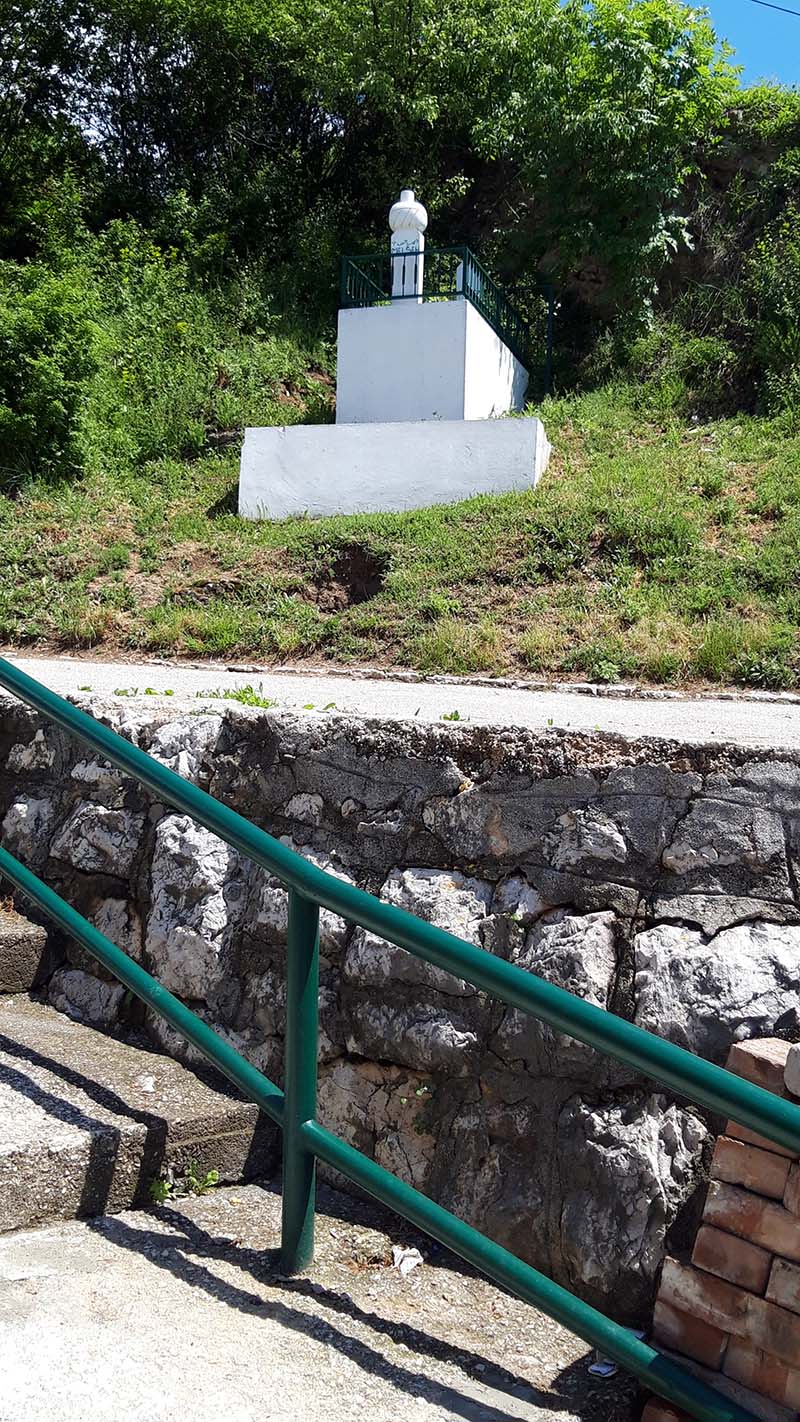
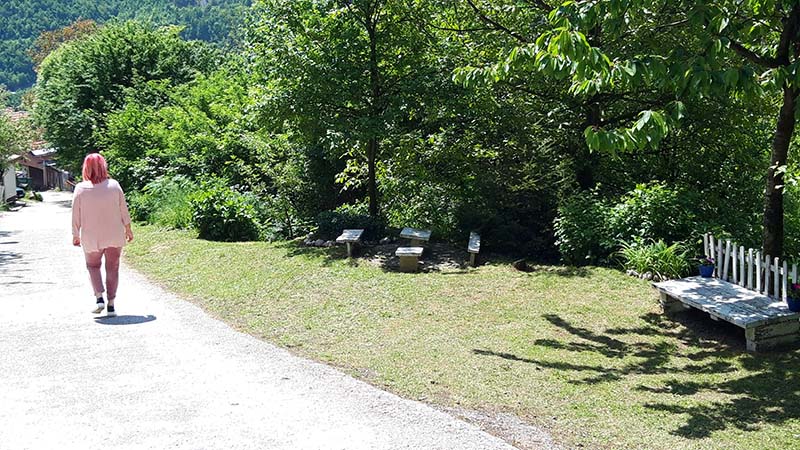
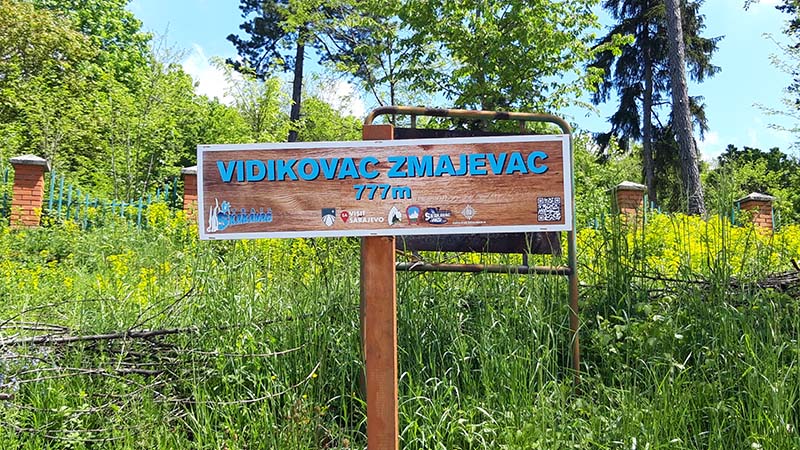

On the way; cultivated terraces border the street, a sway on a square of grass. I was walking in a kind of torpor, lightness. The tranquillity in which a village is immersed around midday; when everybody is busy with a saw, playing outside, or at the orchard; reminded me of my childhood.
I continued the walk and reached the cemetery Grlića brdo. The impression is difficult to describe. It was monumental, not for its architecture, but for the spatial parameters. The low entrance gate and a lateral wall of white polished stone made the sky heavier on the visitor. I felt suspended between land and the immensity of a blue sky extending above and beyond me. On one side of the entrance gate, a small side door for pedestrian was open. The graves are staggered on both sides of the central pathway; following the natural gradient of the site. It is simple and beautiful. The graves consist of a low border delimitating the plot, some are covered with a ledger of white rock, or stone pebbles, or only planted with some flowers, and a headstone. Some flowers were looking very fresh. Ramadan was a few days before, and it is in the tradition to visit the cemetery on the following day, the šehid day.
I continued slowly. Some men were working on arranging the central path. I thought that the cemetery would have an exit at its end, but it didn’t. So I carefully walked the length of its bordering side to reach the starting point again; coming across some chickens from the neighbouring house, playfully strolling out in the sun, life and death, under the same blue sky.
When I came out I thought that after the cemeteries along La costa da morte in Galicia, Spain, Grlića brdo was one of the most beautiful cemeteries I have visited; for the natural setting. Located on a promontory; instead of looking at the Atlantic Ocean, it was overlooking Sarajevo. The feeling of loss of gravity in front of immensity was similar. While around the cemetery, ordinary life in the neighbourhood was taking place, inside of the peaceful houses punctuated by carefully kept orchards and vegetable plots.
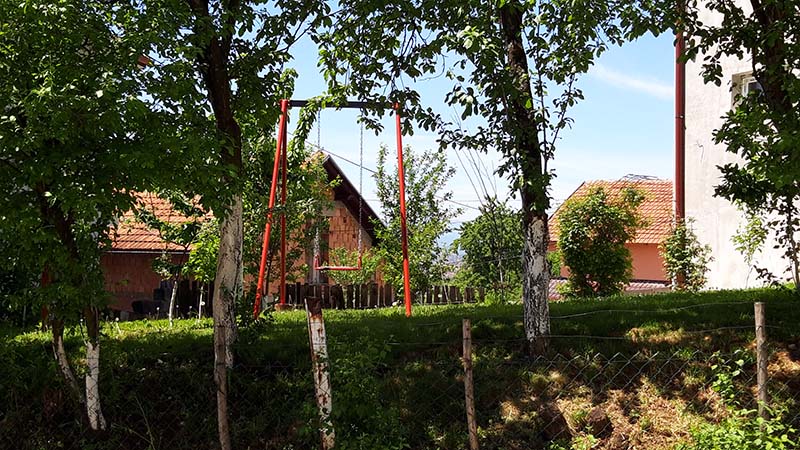
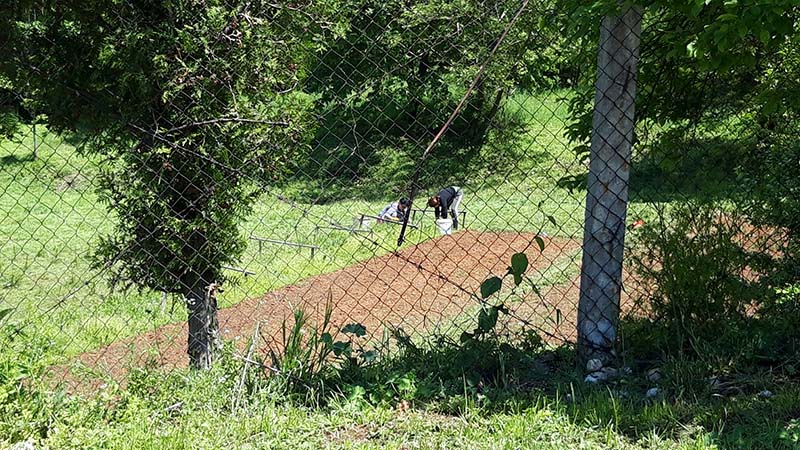
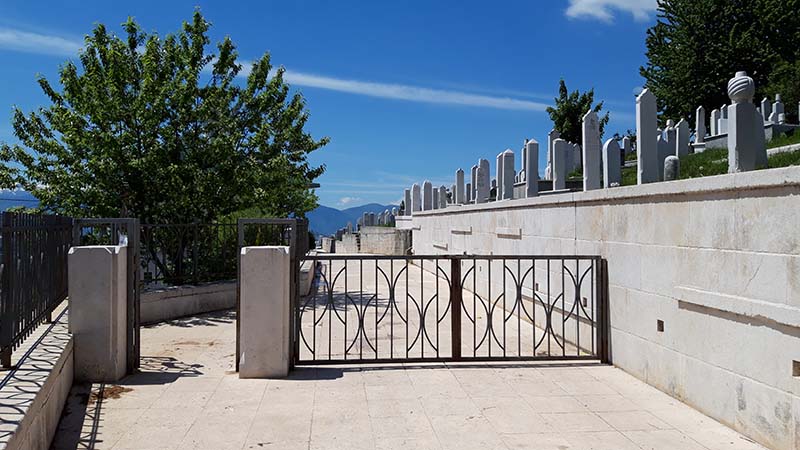
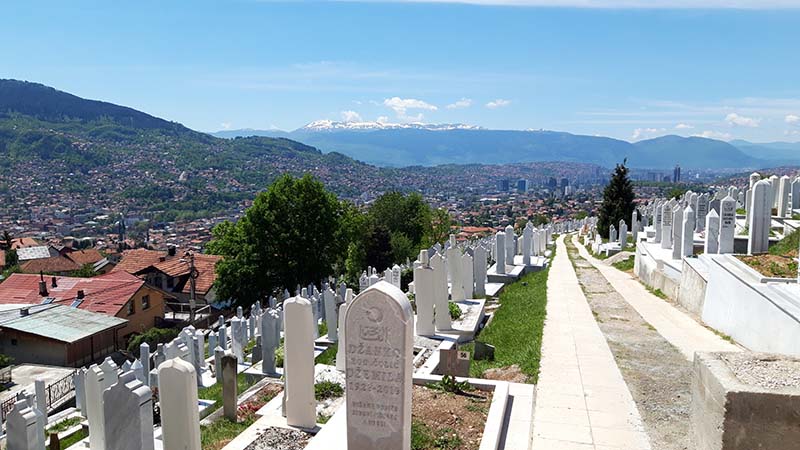
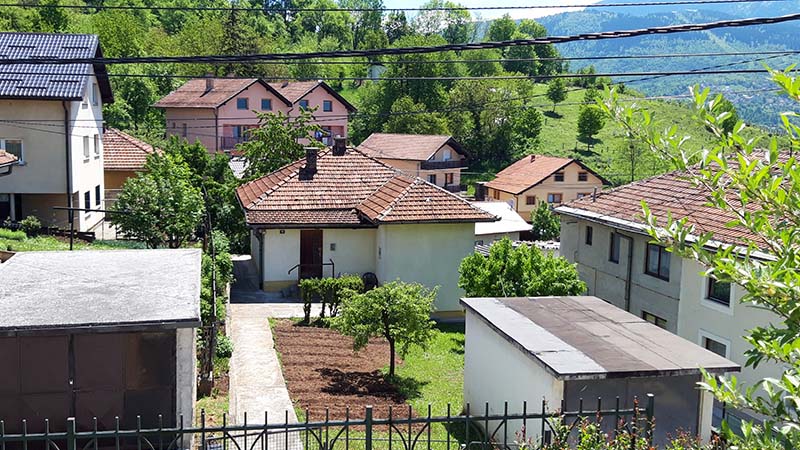
I continued the walk, but after checking the time, I was already thinking of the spot where to stop the itinerary and head back to the point of departure. Moving forward along the main village road, Sedrenik, accompanied by the peaceful humming of horses from the Konjički Klub Hidalgo Sarajevo, I reached a crossroad marked by a public fountain. It was nicely constructed with stone benches surrounding it, an open air belvedere. I decided it was a good enough point to mark the descent back. I took Alije Nematka road down and couldn’t hold my joy; it was beautiful. At some point it becomes only pedestrian with stairs totally embracing the natural slope, and leading you softly down the hill with a breathtaking view of the surrounding. Reaching the end, there was a wide flat vacant spot, where a mother holding a small baby was looking at the cityscape. No wonder this view would could calm any distressed child.
I continued hurtling down the maze of steep streets that led me to my house again. I had the impression of coming from an outing rather than from a walk. I was thrilled with what I saw along the fragment of itinerary I preliminary composed, but also happy with the “off-track” discoveries. The last stretch of the walk was left undone. Next week, on a sunny day, I will continue.
This is the first narrative from a series of walk I will be undertaking in Sarajevo. Tracing a path to be walked together is the next step. Stay tuned!

